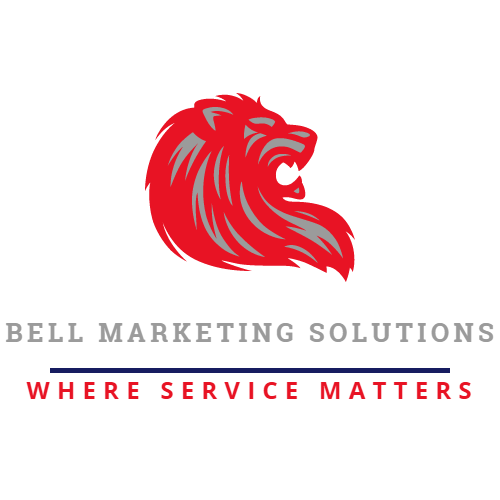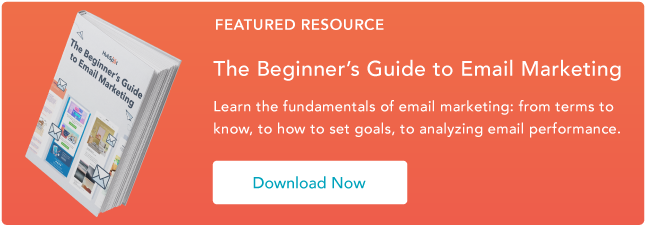If you’re active on LinkedIn, you’ve probably received random messages from recruiters inquiring about putting you in their talent pipeline.
If you’re active on LinkedIn, you’ve probably received random messages from recruiters inquiring about putting you in their talent pipeline.
I’ve received countless generic recruiting messages that make it clear that no one paid attention to my account. Messages have arrived in languages that I don’t speak, or they’ve sent a copy-pasted recruiting email template to dozens of potential candidates that hasn’t been customized at all.
While cold recruiting messages can be highly effective, they often make the hiring process feel impersonal before you even formally get involved.
The recruiting process doesn’t have to feel that way. With the right recruiting email templates, recruiters and recruiting agencies can save time and effectively fuel their talent pipeline. Let’s dive into successful recruiting emails, why they work, and a template that you can use yourself.
Table of Contents
The Best Recruiting Emails
I’ve gathered 12 emails from professional recruiters, executive search firms, and headhunters.
Use these examples to create unique recruiting email templates that can be customized for your own outreach, whether you’re drafting cold recruiting email templates or nurturing existing relationships.
Many of these recruiting emails have been anonymized for privacy.
1. Director of Tax Email
Should recruiting emails include social proof to bolster a company’s cachet? Yes, if it helps answer FAQs about the position or company. This email from Avra Talent leverages social proof in a natural way that informs the potential candidate of the size and responsibilities of the role.
Recruiting emails need to balance sharing company information without overloading the candidate. This is particularly true when headhunters are emailing a passive candidate who isn’t necessarily on the hunt for a new job.
A long-winded email full of company specifics isn’t compelling, but it needs to offer an informative introduction to the company and its mission. This email example walks that line well, providing a lot of basic company information without droning on for paragraphs.
What I like: This email briefly covers a lot of specifics but doesn’t overload the candidate with unnecessary details.
2. Revenue Marketing Manager Position

This email example from the HubSpot marketing recruiting team has been anonymized to serve as a short recruiting email template for your own outreach.
While some emails will go into the interview process and shine a light further down the hiring road, this is short and sweet and focuses on getting a response from any interested candidates.
Recruiting email templates can call recipients to directly apply to a position, or they can offer to further the conversation.
The latter is the case in this HubSpot recruiting email template: The call-to-action (CTA) in this email makes the recipient feel like their time is respected. Further, the hiring manager isn’t trying to funnel anyone into the hiring process.
What I like: While many recruiting email templates include extensive company details, an email this direct can help have a higher response rate with passive candidates.
3. Physical Therapist Email
This email starts with a simple and direct explanation of why this candidate is being pitched, which makes it feel like this hiring manager is being thoughtful and not sending an identical email blast to dozens of people. The reference to LinkedIn helps this feel like a normal conversation and not a hard pitch.
The phrase “explore this potential match further” in the second paragraph further extends an open conversation, which should be a part of all email templates for recruiters.
Some recruiter emails tell passive candidates that they’re the perfect fit for a role at their company, and it comes across as very insincere. The recruiter could never know that without multiple conversations, so lean into the conversation versus the offer.
What I like: The email references both tangible professional experience and the soft skills on display on the candidate’s LinkedIn profile.
4. VP of Revenue Email
“Most recruiting emails are ‘look how great we are, here’s this opportunity,’” shared Lucy Meyer, a seasoned recruiter. “There’s another option, though: Share what your company is like, why you’d like to learn about the candidate, and ask if you think it could be a good fit.”
This approach to the recruitment process prioritizes relationship building, which saves recruiters time in the long run. A growing company will always be hiring, and this approach to recruiting can help fill a company’s talent pipeline with a network of potential candidates. This email example has been anonymized to serve as a template for your own outreach email.
What I like: This recruiting email template acknowledges that this is a passive candidate who’s not necessarily involved in the job search at the moment, and this prioritizes long-term relationships with talent over filling individual job openings.
5. Talent Acquisition Specialist Email
The past examples have been of cold recruiting emails, and here we see a great template for reconnecting with a warm lead. Daniel Wolken, a human resources expert and talent acquisition Specialist at DailyRemote, explained his thought process behind this email template:
“This candidate and I initially connected when he was exploring new HR opportunities. During our initial discussions, I was impressed by his passion for recruitment and talent management. Even though we didn’t have an immediate match for him then, I nurtured that relationship for future roles. This is the template that I used to reconnect with him,” Wolken says.
What I like: This warm outreach email template reiterates the previous conversation, offers a refresher of company details, and gets specific about why this opportunity might be worth exploring.
6. Ecommerce Manager Email
While this email has five substantial paragraphs, it follows a really clear, digestible template: introduction, the reason for the email, intro to the company, why this candidate is right for this company and role, what the role would look like, and further the conversation.
This email translates the candidate’s prior experience as a social media manager to this current role really well, making it clear that this was a customized message only targeting people with ecommerce experience.
What I like: The sentence “I am eager to learn about your career goals” offers insight into the leadership style in this organization and shows positive signs about company culture. That thoughtfulness coming from the CEO of the company is sure to catch the candidate’s attention.
7. Cybersecurity Position
“I crafted this for a candidate I recently encountered while searching for top application security talent,” shares Conor Hughes, an HR professional and consultant. Hughes relayed his expertise on SMB Guide and gave these insights into why he drafted this recruiting email this specific way.
“I initially discovered this individual after reading an in-depth article where she presented her work building a robust AppSec program from the ground up at her company. She clearly demonstrated deep technical expertise along with solid leadership and communication skills,” Hughes recalls.
His goal of the email was to “grab her attention by highlighting how her credentials directly match our open role,” he says.
What I like: The candidate receiving this email will immediately sense how much attention was given to their work. This opportunity is so specific, and the recruiter positions this perfectly as an exciting opportunity.
8. Australian Business For Sale Hiring Email
“The opening of the email introduces our company’s mission and the specific role we’re seeking to fill. Moving to the second paragraph, the email outlines key role responsibilities, expectations, and benefits, providing transparency about the position,” shares Sam Bass, owner of Australian Business For Sale.
Bass says the team ensures to highlight the company’s employee-centric culture that reinforces learning, growth, and innovation. “I believe giving an authentic representation of the role, and our company culture has been a significant factor in attracting top-tier talent,” he says.
What I like: This business has a wide scope (coffee shops to crocodile farms!) but still explains its mission briefly and lets the opportunity take center stage. This tactfully avoids the faux pas of talking about yourself too much when introducing the company.
9. Sales Manager Position
Company values and workplace culture are coming through in this email. These phrases speak volumes:
- What you’ve built during your time there
- Values-driven team
- Make an impact here
- No strings attached
Also, notice that this recruiting email hyperlinks the job title and sends the candidate to the full job description rather than sending an email that’s too long to digest. Cold outreach emails are most effective when they’re digestible, and this is an effective way to keep your communication concise and response rates high.
What I like: The extremely brief company summary makes it clear that this company knows who they are, who they serve, and where they’re going. That confidence and clarity are very attractive to candidates.
10. Acuity Training Sample Email
Rather than diving straight into job descriptions, Ben Richardson, founder and director of Acuity Training, initiates recruiting emails with a personalized question or anecdote. This all ties back to the individual’s professional journey.
“This approach aims to evoke a sense of connection and open dialogue, making the recruitment process feel less transactional and more like the beginning of a meaningful conversation about their career aspirations,” shares Richardson.
Richardson shared the above recruiting email template to help make cold outreach feel genuine.
“This offbeat tactic not only garners higher response rates but also sets a tone of genuine interest and engagement from the very first interaction, creating a unique touch in the recruitment process,” Richardson says.
What I like: This is a warm, direct piece of communication that sheds light on the company culture. Ben practically had me applying at “a match made in workplace heaven.”
11. Senior Software Engineer Position
This is a relatively short recruiting email but covers all of the bases: mentions of the candidate’s experience, the role, company mission, and CTA. The language choice, color, and snappy mission statement all ooze “startup” in the best way.
Mentioning past companies that the CEO has founded is a unique choice of social proof, but prior success is a currency that’s valuable to have in the startup world. It’s an effective, direct recruiting email that helps interested candidates jump straight into the hiring process.
What I like: HiHello is a digital business card company, and I like how they put their product on display in the email footer. On their website, HiHello says to “Turn every email into a branding opportunity,” and they’re embodying that message in their recruiting emails.
12. Home Care Position
This is a unique approach to recruitment communication. Instead of advertising the specific job opportunity, this advertises the workplace experience. The purpose of this email is to let candidates know what it’s like to work for this company by sharing workplace reviews.
“We opted to feature snippets of anonymous employee reviews from our Indeed Employer page in our recruiting emails, which best speak to our workplace culture,” shared Madison Serfas at Assistance Home Care.
At each New-Hire Orientation, Assistance Home Care asks new employees what drew them to apply at Assistance Home Care. Nearly every week, Serfas says she hears that it was the company’s employee reviews or a word-of-mouth referral.
“Each of the nine emails within the campaign also featured a prominent footer featuring our Great Place to Work Certification with a link to explore our Employer page as further social proof for the audience,” Serfas says.
What I like: Workplace reviews are an effective way to get candidates’ attention and be remembered for the right reasons.
How to Write a Recruiting Email
Ready to create your own recruiting email templates?
With the above inspiration, we’re going to walk through a template that you can use to improve your email communication today.
Subject Line
The job of any email subject line is to prompt the recipient to open your message.
Sometimes, you’ll see funny email subject lines like “You dropped your credit card!” only to open the email and read “…now that I have your attention.” I get a lot of cold emails. I hate when they have misleading subject lines, and I doubt I’m alone.
An off-the-wall email subject line is probably not that useful to you unless it really reflects your brand. Keep it simple and honest, as you’ve seen in the examples above. These tips can also help you write a catchy subject line.
Pro tip: Keep your subject line short enough that it can all be displayed in people’s inboxes. This means that most subject lines are about nine words or less.
Purpose of Email
Nobody likes a buried lead; disclose the purpose of your outreach in the first paragraph of your email. Avoid vague, salesy language like “Are you interested in having the career of your dreams?!”
I get cold outreach emails like this a lot for my business, and it makes the purpose of the email feel muddied.
Introduction or Reintroduction
If this is your first time reaching out, introduce yourself and your company in a few well-chosen words. Enough to let them know what you’re about without writing a novel.
If you’ve connected with this candidate in the past, reintroduce yourself and your company. Given the enormous number of emails we all get each day (more than one hundred!), it’s best not to assume that they can actively recall everything about your brand.
Pro tip: Remind candidates where you met or the details of your last conversation.
Why This Potential Candidate
When potential candidates read recruiting emails, they’re asking the question, “Why me?” If you don’t answer this, they’ll assume that they’re one of a hundred people receiving the same email.
This is particularly important when you’re making a cold recruiting email template and reaching out to a passive candidate. Good recruiting email templates need to address this at the beginning of the conversation.
Pro tip: Disclose how you found this candidate and what stood out to you, as we saw in many of the examples above.
Job Opportunity
You don’t need to copy/paste the entire job description, but you do need to share the job title and an overview of the position details. Highlight some of the best aspects of the job or benefits of working at your company.
Pro tip: Use the job title to hyperlink to the job description.
Why Your Company
Job seekers are vetting companies as much as companies are vetting them. Your email templates always need to account for this and share why your company is worth applying to.
Here are some of the forms of social proof we saw in the above examples:
- Company reviews (happy employees).
- Positive workplace.
- Talent of employee body.
- Founder success.
- Company valuation.
- Collaborative environments.
- Culture of innovation.
Pro tip: Avoid the urge to throw a bunch of random social proof at candidates. Make sure whatever you share is highly relevant to the experience they’d have in the company.
Mutual Discovery
“Recruiting emails are done better when they’re done from a place of mutual discovery versus a hard pitch,” shares Lucy Meyer. “Mutual discovery starts the conversation ‘I want to learn about you, hopefully, you’ll want to learn about us.’”
While some recruiting emails try to immediately funnel candidates into the interview process, neither the candidate nor the company is really ready to jump ahead to scheduling interviews at the first point of contact. This is an important step in full-cycle recruiting that shouldn’t be skipped.
Mutual discovery prioritizes relationship building, which will result in a potentially smaller but more qualified group of applicants.
The Ask
What action do you want this potential candidate to take? Your email templates can include any number of CTAs:
- Fill out an application.
- Quick call.
- Formal phone screen interview.
- In-person interview.
- Introduction to other candidates.
The clearer your CTA is, the higher your success rate will be with candidates following through.
Email Signature
Emails, especially cold emails, need to include a few personal details in order to answer the question recipients are asking themselves: “Is this spam or real?” Create an email signature that includes:
- Emailer/interviewer job title.
- Company name.
- Contact details.
- LinkedIn links.
Pro tip: Ask yourself what basic information you’d need to see in order to validate the seriousness of a cold outreach email; then, make sure that all of those details are included in your email signature.
Other Types of Recruiting Emails
These email examples covered warm and cold talent outreach, but other types of recruiting emails may include:
- Follow-up email.
- Interview invitation email.
- Briefing of interview format.
- Interview confirmation email.
- Interview feedback email.
- Rejection email.
- Job offer letter email.
- Checking in email (relationship maintenance).
- Notification of a new open position.
Pro Tip: Leverage an applicant tracking system and email templates to help maintain consistent communication with candidates.
Enticing the Best Candidates
Recruiters inevitably send dozens of emails to funnel top talent into their company’s interview process, and it all starts with recruiting. These emails may be the first time candidates hear about the company and what they do, so they have incredible power.
Reflect on the cold emails you’ve received and think about what impression they left on you and how they compelled (or didn’t compel) you to take action. Use this cycle of self-reflection to help you create email templates that become talent magnets.
![]()



![→ Download Now: The Beginner's Guide to Email Marketing [Free Ebook]](https://no-cache.hubspot.com/cta/default/53/53e8428a-29a5-4225-a6ea-bca8ef991c19.png)
